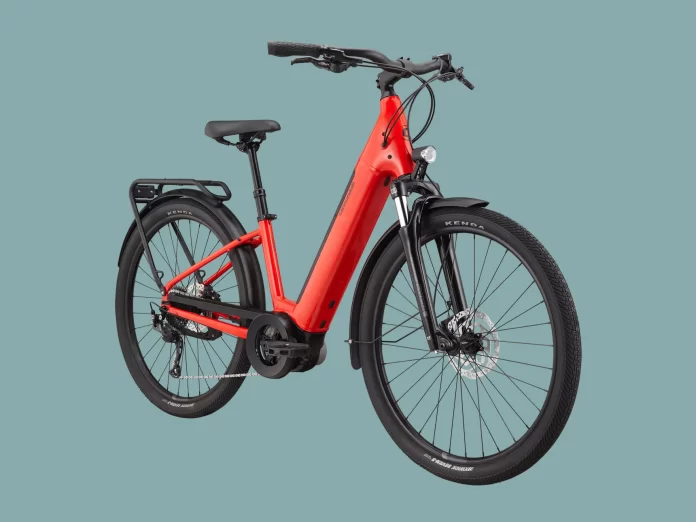Last Updated on March 30, 2024 by Umer Malik
If you’re interested in purchasing an electric bike, the first step is to determine what type of electric bike best fits your needs. There are many different types of electric bikes, including Class 2 electric mountain bikes, Class 3 electric commuting bikes, and even Class 4 electric bicycles. In this article, we’ll cover the benefits of each type and the factors to consider in purchasing one. You can learn more about the best electric bikes for every kind of ride below!
Table of Contents
Class 2 electric mountain bikes
There are several benefits of electric bicycles. These bikes are usually more powerful than their traditional counterparts and can easily travel more than 50 miles on a single charge. Some even have the capacity to go up to 100 miles! To get the most out of these bikes, you should look for batteries with a capacity of more than 500 watt-hours. Brose and Bosch make bikes with dual 500Wh PowerPack batteries that can easily travel 50 miles. To avoid fatigue during long rides, look for bikes with suspension systems.
When looking for an e-bike, it’s important to check if it’s compliant with regulations in your area. While some jurisdictions have strict rules and regulations, you can usually ride a Class 2 bike without worry. Federally-managed single-track mountain bike trails should allow Class 2 e-bikes. They’re ideal for families and recreational cyclists. But keep in mind that there are many benefits of these bikes, including their safety and affordability.
Class 1 electric commuting bikes
There are many benefits to buying a Class 1 electric commuting bike. The bike is quiet, and it’s equipped with a throttle, integrated LED lights, and a rear rack. You can ride the bike on any surface, from paved streets to mountain trails, and enjoy a smooth ride. Several other benefits include a low center of gravity, a sleek design, and a low price.
The motor is activated through pedaling action, and the bike can reach a top speed of up to 28mph. In some parts of the world, e-bikes are considered motor vehicles and must have special licensing and rear identification plates. Depending on the state laws, these bikes may not be legal to use on bicycle-specific infrastructure and trails. However, these bikes are gaining popularity as more people consider the environmental benefits of electric vehicles.
Class 3 electric commuting bikes
When choosing a Class 3 electric commuting bike, keep in mind the restrictions that apply to e-bikes. In many cities, these bikes are restricted to road-adjacent bike lanes, while on multi-use paths, they are prohibited. Because the maximum speed of these bikes is about 20 miles per hour, decision-makers consider them too fast for shared trails. Most Class 3 electric bikes are pedal-assist-only models, although they can be equipped with throttle assistance.
The motor of a typical electric bike is built into the frame of a traditional bicycle, which means that it is much lighter than a normal bike. The motor is 250 watts, which allows the user to pedal up to 20mph. The motor will disengage smoothly at these limits. You’ll be surprised at how much easier it is to climb a hill on an e-bike. In addition to being lighter, you’ll save a lot of time.
Class 4 electric commuting bikes
A Class 4 electric commuting bike is a versatile model with an electric motor that operates through pedaling action. Its top speed is approximately 28 mph. Some models come with dual batteries to increase range. Another option is the HyperScrambler 2 electric bicycle, which has a 2000W peak power and dual battery. This e-bike features five pedal assistance modes, a custom padded seat, and powerful hydraulic disc brakes.
A Class 4 e-bike is not meant for dirt jumps or racing tracks. Although they are fast and have a high power output, these bikes are not meant for racing or riding in bike lanes. They are also not legal to ride on community bike paths or on motorcross tracks. In addition, they should never be used on private property or bike lanes. These bikes are also best used in city areas where pavement is limited.
Class 3 electric mountain bikes
There are three major types of Class 3 electric mountain bikes. Each type has its own pros and cons. For example, Class 2 e-bikes only go up to 20 mph, while Class 3 e-bikes can speed up to 28 mph. Whether you want a bike that’s perfect for commuting or one that’s fast enough to replace your car, you’ll find that the Class 3 model suits your needs.
The Samsung 48V battery delivers anywhere from 30 to 120 miles of pedal assist on any given day. The bike’s battery is rechargeable and comes with a dual battery pack for added capacity. The DOST KOPE is lightweight, sturdy, and made of 6061 aluminum alloy. It arrives fully assembled and is backed by a two-year warranty. It’s a great option for the average commuter.


















